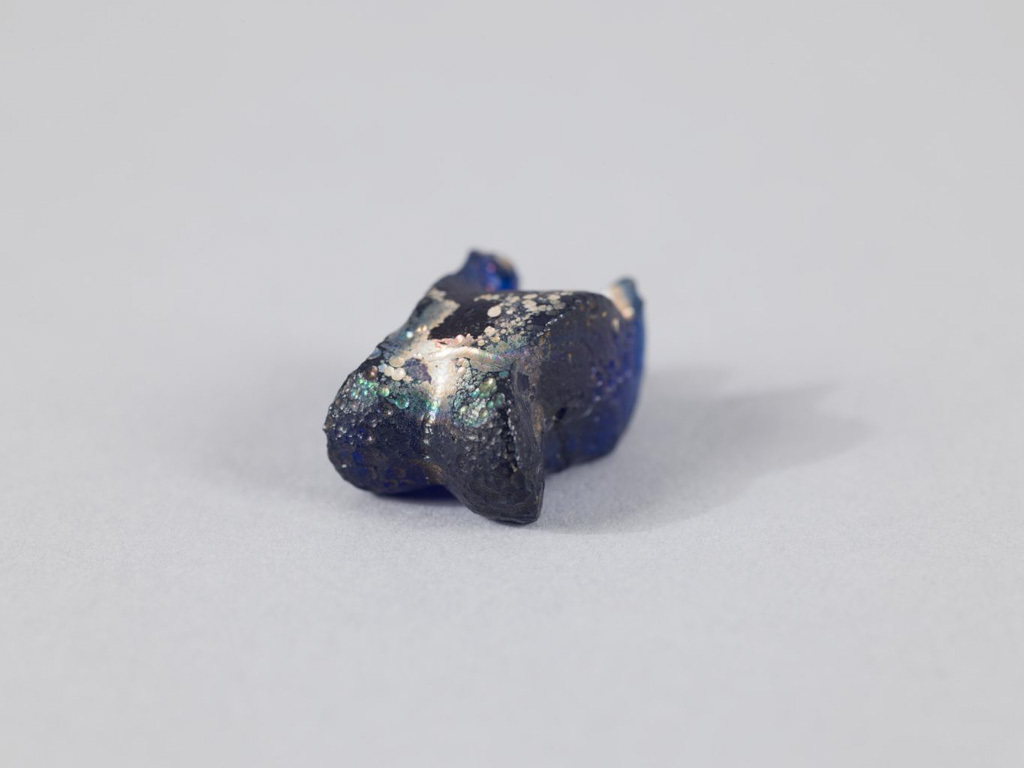This glass game piece in the shape of a knuckle bone was part of a set used in antiquity that functioned similarly to dice. Games using these objects, sometimes called astragali (singular astragalus), were common and enjoyed by men, women, and children in many places and periods. To play, a set of game pieces would be tossed, sometimes to land on the ground or to be caught on the back of the hand, and points would be counted based on the presented faces. The games served many functions: general entertainment, gambling, and seers also employed them as a part of rituals. This piece was purchased by Louis de Clercq in the 19th century in Syria and most likely dates to the Roman period (300 BCE–300 CE). This knuckle bone is one of four from the de Clercq Collection today in the Menil Collection. At least one of the four glass astragali (the dark blue one) comes from the Roman site of Antaradus, or modern Tartus, in Syria.
Each knuckle bone has four main faces that it can present when tossed: one concave long side, one convex long side, one indented short side, and one flat short side. Natural bones from sheep or goats could also be used with minor modifications. On fabricated pieces, you can sometimes see the mold seam around the edges and striations in the glass.

